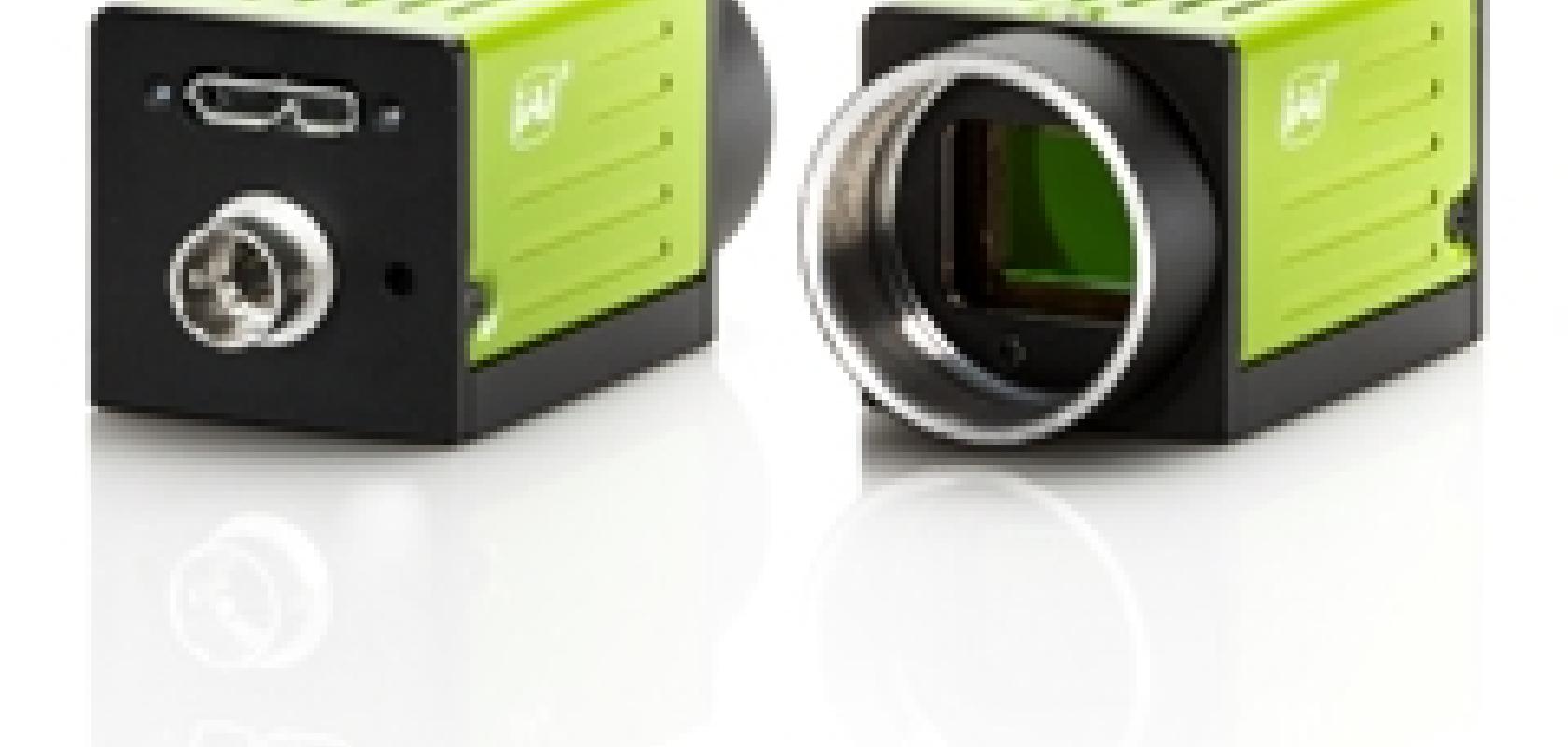JAI today announced that its small and versatile 5-megapixel entry-level industrial camera – the GO-5000 – is now available in models with USB3 Vision or GigE Vision interfaces. This is in addition to the original Power-over-Mini-Camera-Link model introduced in late August. The new models enable users to leverage two of the industry’s most popular “grabber-less” technologies for direct connection to PCs or other image processing hardware.
For USB3 Vision users, the GO-5000M-USB (monochrome) and GO-5000C-USB (color) use a high-speed USB 3.0 interface to provide 5-megapixel images at up to 62 frames per second for 8-bit monochrome or raw Bayer configurations. The GigE Vision models – GO-5000M-PGE and GO-5000C-PGE – feature a single RJ45 port with Power-over-GigE-Vision support to deliver image information at up to 22 frames per second.
All four of the new cameras feature the same 5-megapixel CMOS imager found in JAI’s high performance Spark SP-5000 camera, but with a much smaller and lighter form factor. Dimensions are 29 mm x 29 mm x 41.5 mm (excluding the C-mount lens mount) with a total weight of only 46 grams.
In addition to 8-bit output at 62 or 22 fps, respectively, the cameras provide 10-bit output at up to 49 fps (USB3) or 15 fps (GigE), and 12-bit output at up to 41 fps (USB3) or 15 fps (GigE).
Like the original GO-5000-PMCL, the new models feature a combination of 5 micron square pixels and versatile ROI capabilities, enabling them to be easily configured to meet a wide range of customer requirements for resolution, speed, and optical formats.
For example, by creating a centered 1920 x 1080 ROI, users can configure the GO-5000 to provide high-speed 1080p HD video that fits completely within the optical format of a 2/3” C-mount lens. This is in contrast to CMOS cameras with 5.5 micron pixels which generate 1080p image sizes that are slightly larger than the standard 2/3” optical circle, thus requiring more expensive 1” image optics to ensure that vignetting will not occur.
Monochrome models feature a range of binning options including 2x2 and 4x4 binning to allow users to effectively create 10-micron, or even 20-micron, square pixels to maximize sensitivity and signal-to-noise characteristics for specific applications, as well as increasing the overall frame rates.
Like the original Spark SP-5000, the GO-5000’s imager features a combination of analog and digital gain controls to reduce the amount of quantized noise in low-light images compared to conventional CMOS cameras offering digital gain functions alone. On the color models, an on-chip 4-channel analog gain function is utilized to allow individual adjustment of R, G, and B information for better white balancing with reduced noise.
Both the USB and the GigE models accept power over their interfaces for a clean, one-cable configuration. Alternatively, a separate 6-pin connector is provided for power, triggering, or other external connections.
The versatility of these cameras, coupled with a low list price, makes them adaptable to a wide range of machine vision applications. Their small size and light weight are ideal for inspection applications which require repetitive camera movement, robotics/unmanned vehicles, or mounting in tight spaces.


